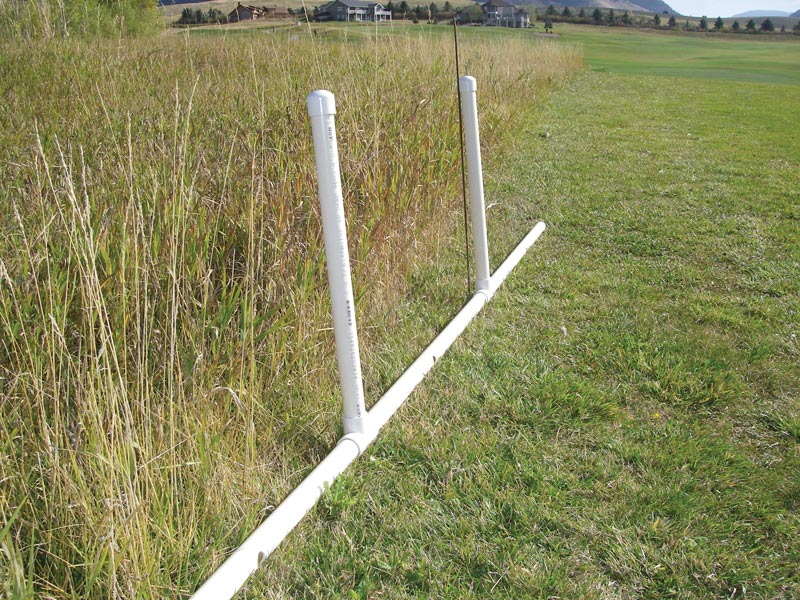Vole Grass Damage Solutions: Effective Control Approaches
Vole Grass Damage Solutions: Effective Control Approaches
Blog Article
Comprehensive Overview to Reliable Vole Pest Control: Invasion Identification and Treatment Approaches
In the realm of effective insect control, vole infestations posture a distinct obstacle that demands a tactical approach. These tiny rats, typically mistaken for mice, can damage gardens, yards, and plants if left unchecked. Identifying the indications of vole existence and implementing targeted therapy approaches are crucial parts of a successful parasite management plan. By checking out the subtleties of vole behavior, understanding crucial indicators of problem, and evaluating a variety of control alternatives, one can create a detailed approach to deal with these elusive bugs.
Comprehending Vole Habits
Vole behavior is identified by their burrowing behaviors and fast reproduction prices, making them a challenging pest to control properly. These small rats commonly develop intricate passage systems underground, using them for sanctuary, food storage, and transportation. Voles are herbivores, eating a selection of plants, grasses, roots, and bulbs, which can trigger significant damages to yards, orchards, and yards. Their rapid reproductive rate more complicates control efforts, with women capable of generating numerous trashes in a solitary year, each consisting of a number of spawn.
Voles are most energetic throughout the morning and night hours, investing the majority of their time foraging for food. Their delving practices not only disrupt yards and yards yet additionally make them testing to identify and get rid of. Understanding vole habits is crucial for efficient pest control approaches. By identifying their burrow areas, keeping track of feeding locations, and implementing targeted control approaches, such as trapping or habitat modification, vole infestations can be handled successfully.
Signs of Vole Invasion

Avoidance Methods
Executing reliable avoidance strategies is vital in minimizing vole infestations and protecting greenery from their damaging feeding practices. To protect against vole infestations, it is vital to begin by removing potential food sources and shelter.
Frequently inspecting the building for indicators of vole task, such as runways and burrow openings, is crucial for very early discovery and timely activity. If vole task is presumed, think about making use of repellents or catches purposefully put near their paths.
Non-Lethal Control Approaches
To successfully manage vole populations while focusing on gentle methods, non-lethal control techniques supply functional options for minimizing vole damage in landscapes and yards. These barriers can be hidden at the very least 12 inches deep and curved at a 90-degree angle to protect against voles from delving beneath.

Lethal Control Options
One efficient approach for addressing vole problems in landscapes and yards entails the strategic use deadly control choices. When confronted with an extreme vole infestation that non-lethal methods have actually fallen short to contain, applying lethal control measures comes to be vital. One commonly utilized dangerous control choice is using breeze catches. These traps are made to promptly and humanely kill voles upon activation, making them a popular selection for several garden enthusiasts and landscaping companies. To enhance the performance of breeze traps, it is recommended to place them in locations where vole task is high, such as along runways or near burrow entries. One more dangerous control alternative is the usage of poisonous baits specifically created to target voles. These baits have poisonous substance that is consumed by the voles, leading to their ultimate death. Care must be worked out when using toxic lures to prevent harm to non-target pets or pet dogs. On the whole, when using lethal control options, it is necessary to do so properly and according to regional regulations to effectively handle vole problems.
Verdict
To conclude, reliable vole insect control calls for a detailed understanding of vole habits, identification of vole yard damage indicators of invasion, implementation of avoidance techniques, and application of both non-lethal and lethal control techniques. By integrating these strategies, individuals can efficiently take care of vole populations and protect their property from damage. It is essential to deal with vole invasions quickly to stop further problems and minimize the influence on the surrounding atmosphere.
Offered the elaborate passage systems and rapid reproduction prices characteristic of voles, identifying the indicators of vole infestation becomes crucial in effective pest control. One of the key indications of vole presence is the visibility of surface paths or routes in grass or snow, typically about 1-2 inches wide, developed as voles take a trip between their burrows and food resources.To properly handle vole populations while focusing on gentle methods, non-lethal control strategies offer functional services for decreasing vole damage in yards and landscapes.One efficient technique for addressing vole problems in landscapes and yards involves the critical usage of lethal control alternatives. vole pest control.In final thought, efficient vole bug control requires an extensive understanding of vole actions, identification of signs of infestation, application of prevention strategies, and application of both non-lethal and deadly control approaches
Report this page